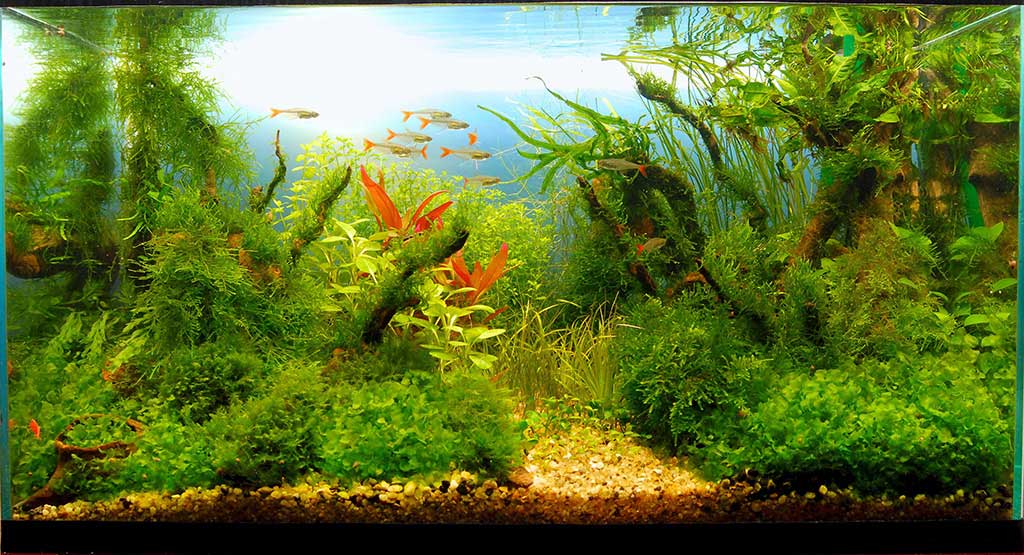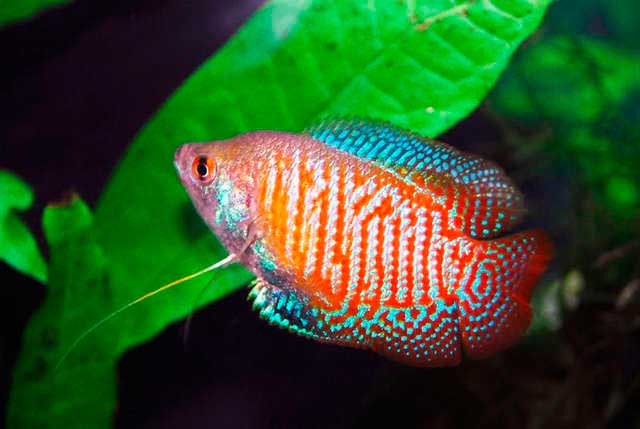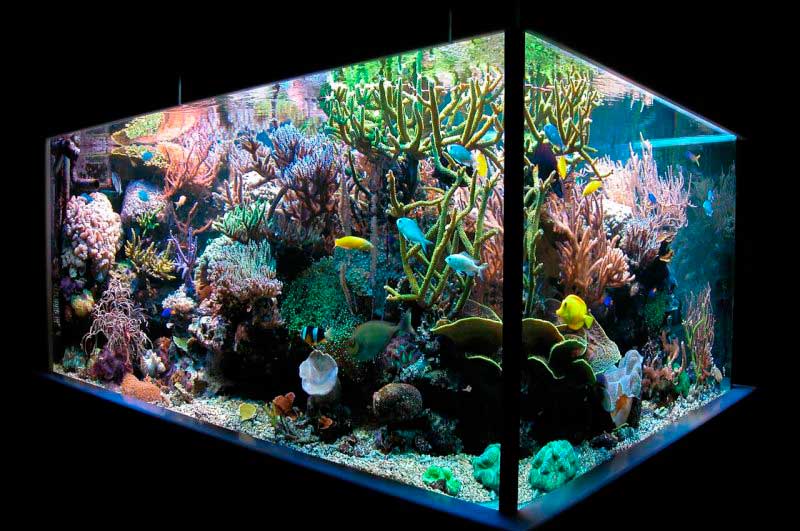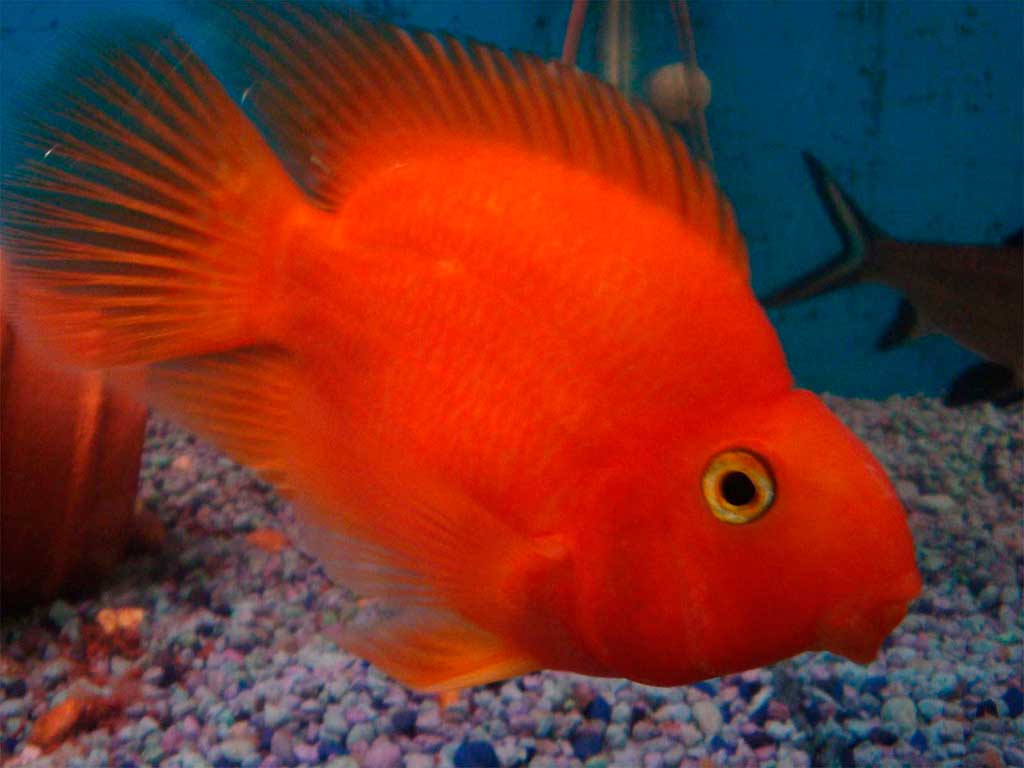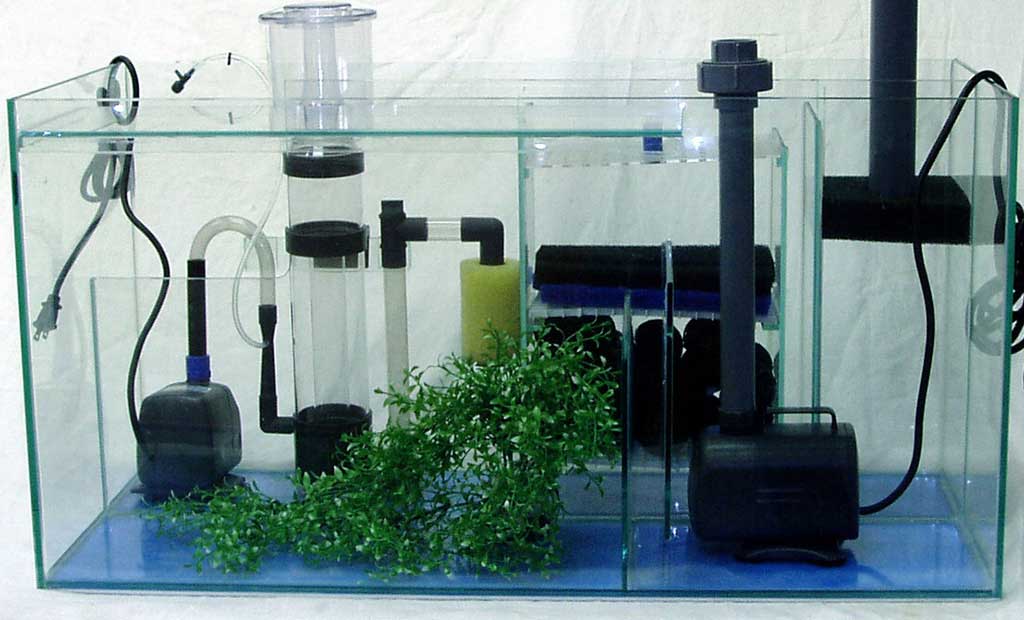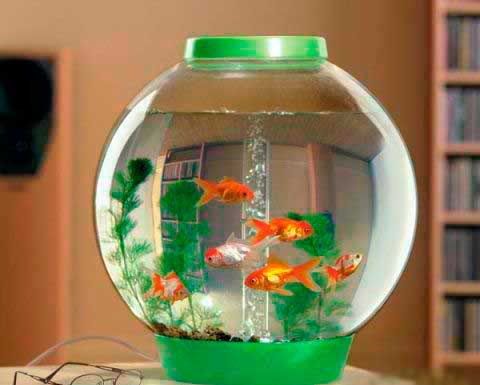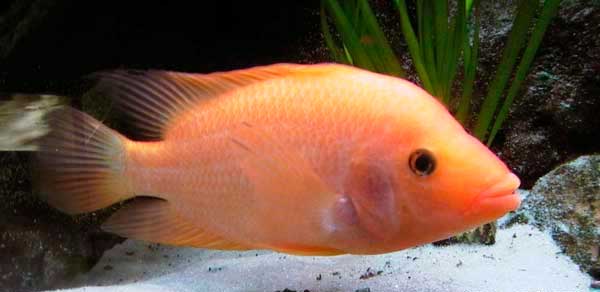Growing aquarium plants is an art no less complex and interesting than keeping aquarium fish. It requires a lot of knowledge and skills.
There are aquariums in which plants are not necessary or are used for short periods of time for specific purposes. These are, for example, grow-out or spawning tanks. These tanks are used for specific purposes. Therefore, thickets of aquatic vegetation will only interfere with the implementation of work on the realization of the main task. But these are only special cases.
Most of the decorative aquariums, which include percent ninety of our indoor man-made lakes, without plants look empty, uncomfortable. It is not the case when the fish swim among the underwater thickets approximating the conditions of their existence to natural.
What is the aquarium for? For fish or for plants?
The world of underwater plants is no less marvelous and diverse than the world of aquarium fish. Therefore, there are relatively many amateurs and professionals who keep mainly and sometimes exclusively aquarium plants behind the aquarium glass.
The aquarium, whose main inhabitants are aquarium plants, even has its own name. Call such aquariums Dutch. Probably because for the first time such underwater gardens began to equip the Dutch aquarists. Fish for the Dutch aquarium is nothing more than a certain background revitalizing the overall picture.
One way or another, aquarium plants are as equal inhabitants of ponds as fish, shrimps or snails. In addition, aquarium plants perform a number of very useful functions, which are necessary for the normal existence of all the hydrobionts that have been brought together by your wish.
Growing aquarium plants What is it for?
Aquarium plants are also a shelter for small fish should the need arise. They participate in the cycling of substances in the aquarium. Utilize carbon dioxide, neutralize nitrates and nitrites, which are the products of aquarium fish. Finally, many plants are so beautiful that you can get an aquarium just for them.
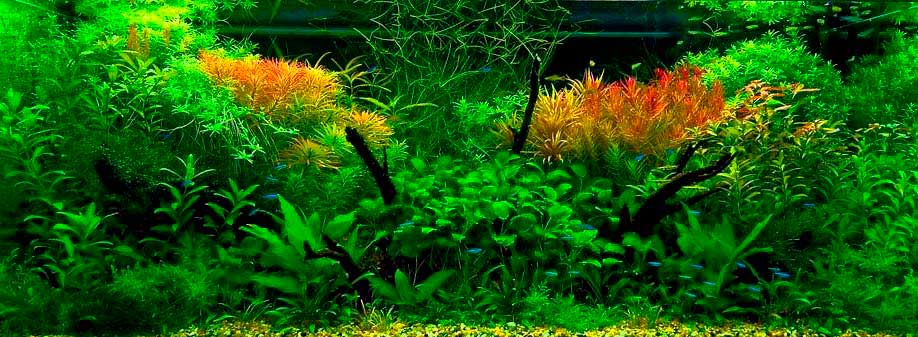
Plants such as pistole, elodea, and vallisneria have long been known and widespread. These plants have become widespread due to their unpretentiousness. They, as a rule, feel well in the reservoir, arranged for most aquarium fish.
But there are more capricious species, which should create some special conditions for them to grow, pleasing your eyes with their emerald green. And there are some that for their sake have to be equipped with a separate container, but even with such efforts, it is not always possible to achieve normal growth from them.
Of course, within the framework of one article it is impossible to tell about all the subtleties that need to be taken into account in the maintenance of all the plants found in aquariums today. But the main points that should be paid attention to, we will try to highlight today.
Let’s start with the soil. Let’s make a small lyrical digression. Most aquarium plants are higher plants, not algae as they are sometimes called. Most of these higher plants have the same organs as terrestrial higher plants. Roots, stems, leaves, flowers, inflorescences.
Ground for Growing Aquarium Plants
So let’s start with the soil. Soil is essential for the roots of the plant. It serves for plant rooting and creates the best conditions for the roots to absorb nutrients. For most aquarium plants the best soils are time-tested coarse river sand, small pebbles, small gravel, fine fraction of expanded clay. Diverse substrates or substrates with different grain sizes should not fill the bottom of the aquarium. Because of the different sizes of grains that form the ground in its thickness can be formed poorly washed areas. In them can accumulate organics, the decomposition of which can result in the formation of hydrogen sulfide.
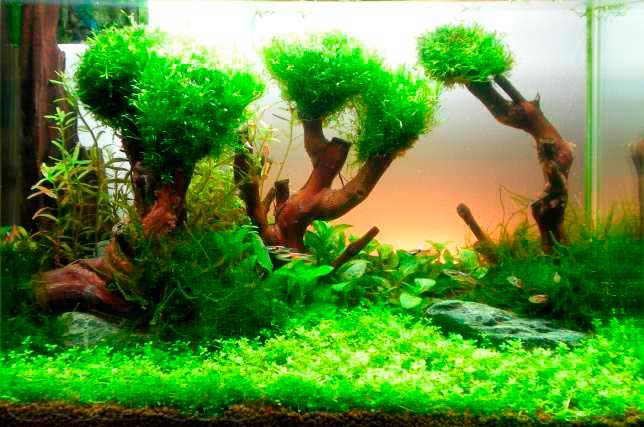
For plants that need anaerobic conditions for roots (Cryptocoryne Griffitha, some species of Nymphaea) it is better to buy small pottery pots and plant these caprisulas in them.
If there are no special design ideas, the soil is poured in an even layer or with a slight slope from the back wall of the aquarium to the front viewing glass. For most aquarium plants, a layer of soil 5-7 centimeters high is sufficient.
Growing aquarium plants Natural and artificial fertilizers
The next thing to think about is the nutrition of aquarium plants. Fish have a system of digestive enzymes. These enzymes allow them to digest their food and extract the necessary nutrients from it, throwing away the waste products. Underwater plants lack these enzymes. They are autotrophs. The environment must contain all the nutrients necessary for their existence in the forms available to them. We can say with a certain degree of convention that aquarium plants live in conditions of hydroponics. As any hydroponic culture they require that the nutrient solution (in our case aquarium water) contains all the necessary nutrients in sufficient quantities.
If you have a Dutch aquarium, then everything is relatively simple. You can put fertilizer directly into the water. But you also need to control the amount of nutrients, because their excess can be no less harmful than their lack. It is more complicated, if the aquarium is still designed to keep fish. Excess fertilizer can kill them. But here begins the real magic or sorcery (what one likes better).
An aquarium is a model of a natural body of water. This means that the processes that take place in natural conditions also take place in an artificial body of water. Fish consume worms, crustaceans and other goodies that you provide them with, and excrete … No, it’s not what you think it is. You can call it that, but it is actually a high quality balanced fertilizer for aquarium plants.
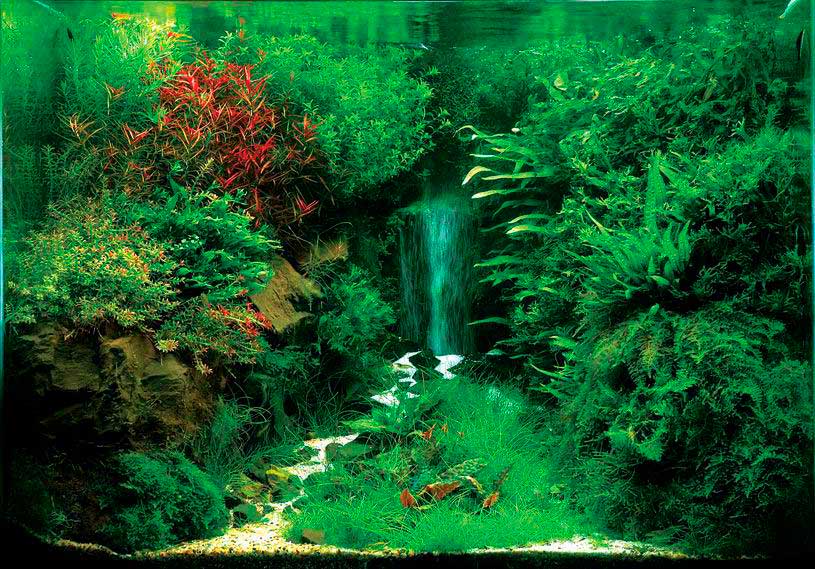
Elements of plant nutrition
Let’s go back to botany. What nutrients does a plant need first of all? Nitrogen, oxygen, carbon – these are the so-called macronutrients. Plants need them in relatively large quantities. And fish in large quantities of nitrogen-containing substances formed after digestion of those very tasty worms, which you fed them the day before. It turns out that, giving food to your aquarium fish, you also bring into the aquarium and the necessary nutrients for plants.
In addition, plants need a number of trace elements for normal growth. We will not dwell on them, we will only say that the excreta of fish are rich in trace elements to such an extent that they fully satisfy the needs of plants.
Replenishing iron deficiency
The only thing that stands out is iron. It can be scarce. This is especially true in modern all-glass or glued aquariums without a metal frame. To compensate for the lack of iron can be different ways. You can buy iron-containing fertilizers, making them in accordance with the instructions. Or you can fix near the aerator atomizer sprayer a small degreased iron nail.
By consuming substances secreted by fish in the process of digestion, plants firstly clean the water from these substances. Secondly, they build their tissues from them. Some plants serve as additional food for fish that need plant food. As a result of digestion of these plants, substances that plants need for growth are formed again. This is how the great “cycle of crap in nature occurs…” (“The Life and Extraordinary Adventures of Soldier Ivan Chonkin” by Vladimir Voinovich).
The art of the aquarist is just that this cycle in the man-made lake created by him was balanced, excluding sharp fluctuations in the chemical composition of the aquatic environment and that all the hydrobionts living behind the aquarium glass, was nourishing, warm and cozy.
Clay is also a fertilizer Growing aquarium plants
Some plants that have recently appeared in our aquariums are still not enough nutrients contained in the water and enter it with fish products. For these plants when planting can be arranged additional feeding. To do this should be made balls of clay mixed with well boiled peat. Three parts of clay should take one part of peat. From this mixture you need to roll balls with a diameter of one and a half – two centimeters. To clay does not torture the water, before placing these balls in the aquarium, it is desirable to dry them in the oven. Now such a ball can be placed at the bottom of the hole in which the plant will be planted.
The point is that when we said that plants lack the enzymes that allow them to extract nutrients from the environment, we oversimplified our story. In fact, plant roots secrete a number of enzymes capable of breaking down the soil into substances that the plant can consume from the environment with the help of the same roots. This clay ball will be gradually processed by the enzymes secreted by the roots of the plant.
Growing aquarium plants Lighting
Another environmental factor without which no green plant can exist is light. The green color of a plant is due to the chlorophyll it contains. This organic substance works under the influence of light, supplying the plant with the energy needed to build its tissues. It should be borne in mind that the more the solution contains nutrients for the plant (the same substances are toxins for fish), the more intense the lighting should be.
Not only nitrates and nitrites are toxic to fish, but also carbon dioxide. It consists of oxygen and carbon. And causes the acidic reaction of the medium. Consuming carbon dioxide, the plant supplies itself with carbon – the basic building material of living organisms on planet Earth. In the process, oxygen is released. Reducing the amount of dissolved carbon dioxide causes the reaction of the environment to shift to an alkaline side. It should be noted here that plants also release carbon dioxide. But during daylight hours, its absorption prevails over its release. An adequately illuminated plant can absorb much more carbon dioxide during the day than it emits during the day.
Is there a need for a dimmer switch?
What kind of lighting is required for our underwater garden? We already know that its intensity is important. It should be taken into account that a young plant or a plant that has recently been planted in a new location requires less light. On the contrary, a plant that is thriving or blooming needs a lot of nutrients. To assimilate them, the plant needs energy. This means that the light that produces the energy also needs to be more intense. Therefore, if you plan to decorate your pond with complex, capricious plants, the lighting system should be made adjustable. To date, the best performance characteristics have fluorescent lamps. They should be placed in the lid of the aquarium at a distance of about 10 centimeters from each other. It should be possible to switch on groups of lamps or each lamp separately.
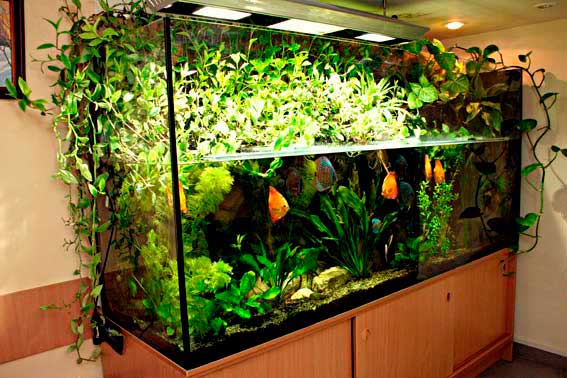
Does the spectrum of the light make a difference?
There has been a lot of discussion about the spectrum of light that should be emitted from aquarium lamps. Even ten years ago it was recommended to light the aquarium with daylight lamps together with incandescent lamps so that the plants receive those wavelengths of light that allow chlorophyll to work most effectively.
I do not like to use incandescent bulbs for lighting plants. In the first place, they warm rather than shine, and in the second place, studies conducted in recent years in phytotrons around the world show that chlorophyll is most sensitive to the blue and red parts of the spectrum. Incandescent lamps, of course, contain wavelengths corresponding to the red color, but their share is not great even when compared to visible radiation. If you compare it to infrared radiation, it’s not worth it.
Plants, like all living organisms, are adaptable. They can adapt to a certain spectrum of light source. Those aquarists who are engaged in this business for more than a year – know that the plant can feel great under the light source to which it is accustomed. But it is worth changing the lamp to another one with a different spectrum of radiation, and the growth of the plant slows down. Some time passes and the plant, having adapted to the new light conditions, begins to grow vigorously again.
Specialized lamps for plants
If you do decide to experiment with the blue-red spectrum, use Philips’ Fluora series. These lamps are specially designed for plant lighting and most of their spectrum is made up of blue and red wavelengths.
Lighting modes are selected based on the species composition of your underwater garden.
A few words about the active reaction of the medium and the water temperature. Most aquarium plants are suitable for those temperatures and pH, which are comfortable for fish. But some species of cryptocoryne can literally dissolve if the active reaction of the medium is shifted to the acidic side. The same cryptocoryne can die from a short-term drop in temperature below 20 degrees Celsius.
Growing aquarium plants Compatibility of species
Another suggestion. Do not place in the same aquarium close species capable of cross-breeding. This will lead to the erasure of species affiliation, which actually happens with anubias and aponogetons. Species affiliation of bushes growing in some amateur aquariums can be determined with great difficulty. It is understandable the desire of the amateur to collect a collection of, for example, the same aponogetons, but it should be borne in mind that this collection should keep its “museum” exhibits in species purity.
I hope that the main points have been covered in this article. Well, the rest should be adjusted in accordance with the description of biological features of those species that you want to keep and in accordance with your own experience, which comes with time.
